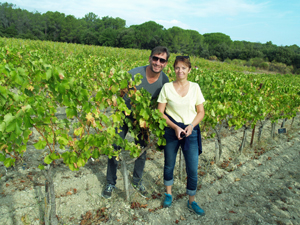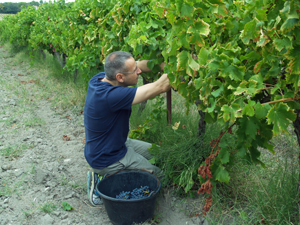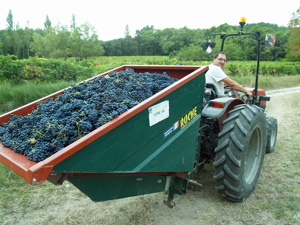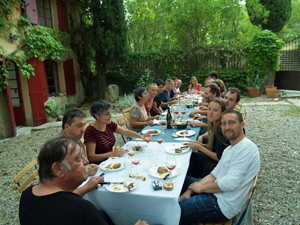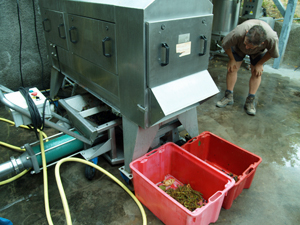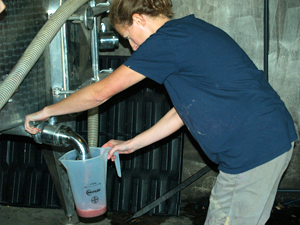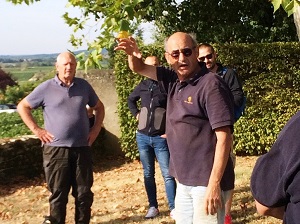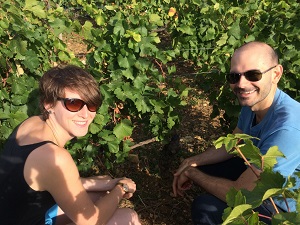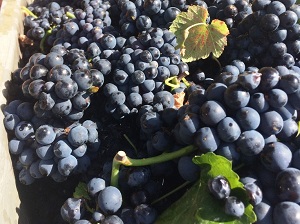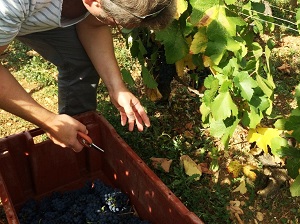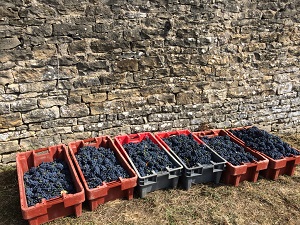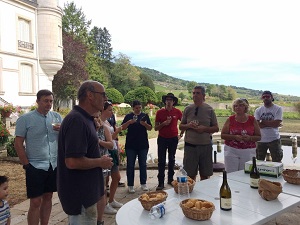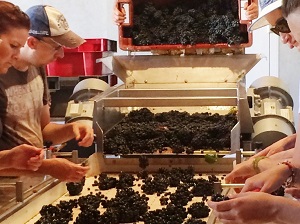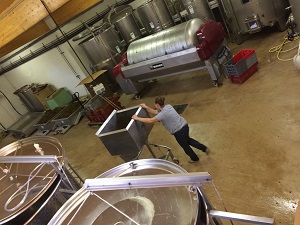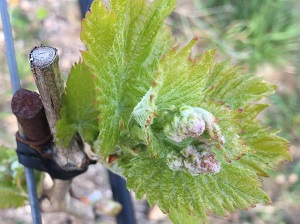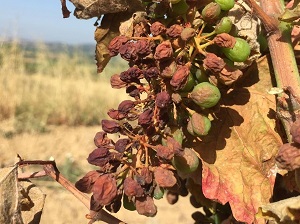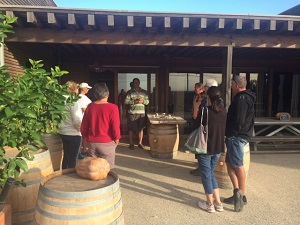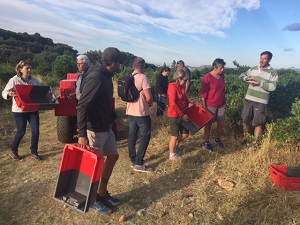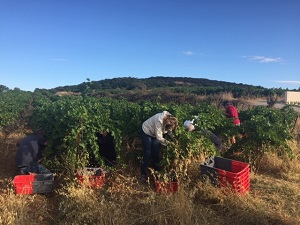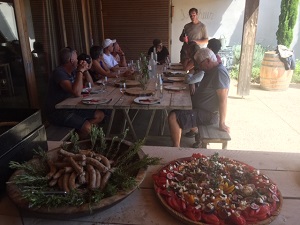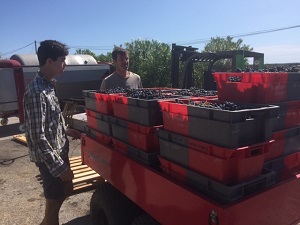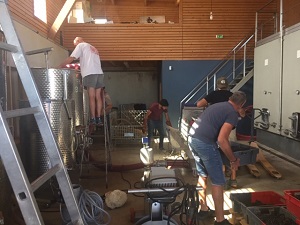The mornings had started to be a little cooler in the South West of France and the leaves had started to change colour… a sure sign that it was harvest time in Saint-Emilion. We met up at Château Coutet to get involved in picking the grapes during the 2019 Harvest Experience Days.
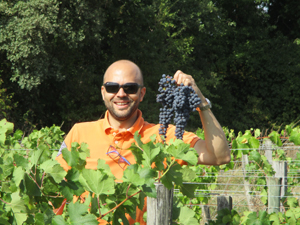
We were introduced to Mathieu, one of the winemakers and a member of the David Beaulieu family that own and run the winery. He recounted the passionate history of his family, and kept us mesmerized all day long.
Our adopted vines are located on one of the highest points in Saint-Emilion, in the Peycocut vineyard up on the limestone plateau. From here, the Saint-Emilion church tower seems very close as the crow flies. The dark blue grapes contrast with the surrounding landscape of green vine leaves. The vines were as tall as us, and we could just make out a few heads bobbing up and down as we searched for our adopted vines.
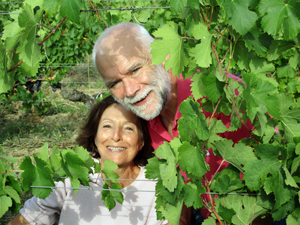
Harvesting seems simple, just cut all the bunches of grapes! First of all, Mathieu gave us some safety tips to try and avoid cutting our fingers. We were to harvest two per row, opposite each other, so we had to be careful not to cut our partners fingers! We also learnt that the grapes that grow at the top of the vines are not mature enough and too acidic to be harvested, so these grapes were to be left alone to ensure a better quality wine.
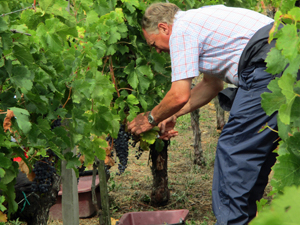
Having listened to our instructions, we started the harvest. The foliage can be dense and some grapes are more difficult to find than others, and some were even forgotten altogether!
Once the baskets were full, the porters brought the grapes to the tractor. This technique allows the grapes to arrive intact to the winery. The atmosphere was very relaxed and convivial as we snipped away!
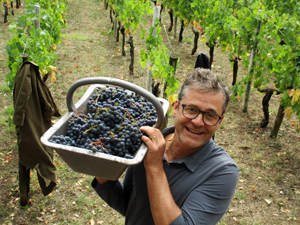
Before we knew it, we had arrived at the end of the morning, and time for a well-earned aperitif of Claret on the lawn in front of the château. The aromatic and fruity rosé was very refreshing, and sharpened our taste buds before we sat down to the winemaker’s lunch in the château’s dining room.
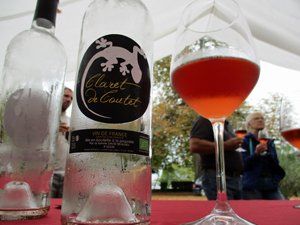
Lunch was accompanied with some of the wines from the estate, starting with the 2016 Belles Cimes which is made from the younger vines. The stuffed guinea fowl was paired with the 2014 Château Coutet, which is one of the classical wines, revealing the finesse and complexity that is the signature of the winery. Mathieu then treated us to the 2014 Demoiselle wine with cheese. It’s a special wine made exclusively from vines that are around hundred years old and are located on the Saint-Emilion limestone plateau. The soil is worked by horse and everything is done manually to reduce the carbon footprint as much as possible.
After lunch, we set about sorting the grapes. To ensure the best quality, the grapes have to be sorted so that only the best ones make it into the vat.
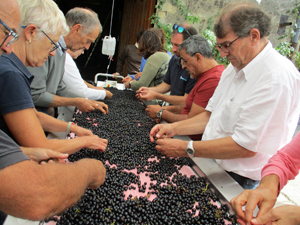
The grape bunches climb into the de-stemming machine with the help of a conveyor belt. Here the grapes are separated from the stalks, and the berries then make their way along the sorting table, where any unripe grapes or leaves are removed. The grapes that remain are then put into the vat to start the fermentation process.
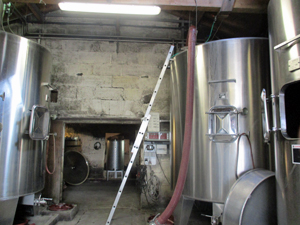
The day ended with Mathieu explaining the different fermentation processes and the work that happens in the fermentation hall. The work at harvest time isn’t just restricted to the vineyard!
Many thanks to Mathieu for his explanations and for sharing the love he has for his work. We look forward to returning to the chateau next year to taste the fruit of our labour during the Vinification Experience Days.



